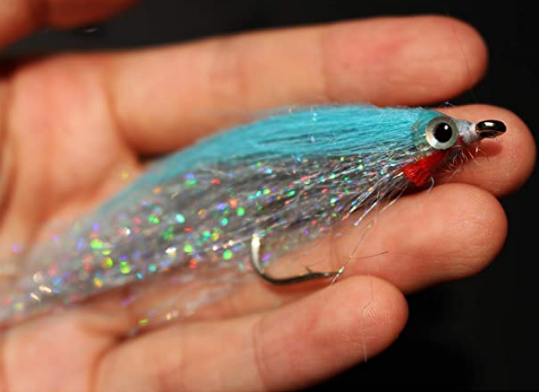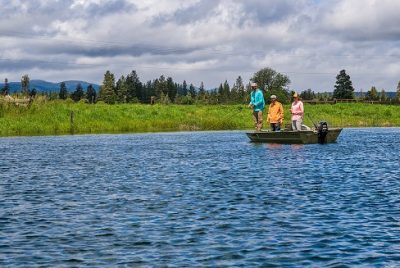Fly Fishing for Bass
As an avid angler and fly fishing enthusiast, I find myself constantly drawn to the tranquil waters, eager to pursue the thrilling sport of fly fishing for bass. The dance between the angler and the elusive bass offers an unparalleled experience that keeps me coming back for more. In this article, I will share my journey into fly fishing for bass, providing helpful suggestions and reasons to make your own foray into this exhilarating world.
My Journey into Fly Fishing for Bass
Since my early childhood, I have been captivated by the magic of fishing. Hours spent at the water’s edge, waiting for that elusive tug on the line, have instilled in me a deep appreciation for the outdoors and the mysteries it holds. Over the years, my passion for fishing grew, and I found myself exploring various techniques and species.
It was during a fishing retreat with friends that I was first introduced to fly fishing for bass. Witnessing the artistry of casting and the finesse required to fool a bass into striking a fly was nothing short of mesmerizing. From that moment on, I knew fly fishing would become an integral part of my life.
Essential Gear for Fly Fishing
To embark on your fly fishing journey, selecting the right gear is of paramount importance. A high-quality fly fishing rod and reel designed specifically for bass fishing are essential components. A well-balanced setup ensures smoother casting and greater control over the fly presentation.
Equally crucial is the selection of fly lines and leaders. The right combination depends on the type of flies used and the fishing environment. A floating line is ideal for topwater fishing, while a sinking line is more suitable for subsurface presentations.
Fly selection is an art in itself, with a plethora of patterns to choose from. Understanding the bass’s feeding behavior and the prevalent insect life in the area will aid in selecting the most enticing fly.
Choosing the Perfect Location
Bass can be found in a variety of habitats, from serene lakes to meandering rivers. Understanding their preferred locations at different times of the year is essential to successful fly fishing. Shallow waters with structures such as rocks, fallen trees, and weed beds often attract bass seeking shelter and ambush points.
When choosing a fishing location, consider factors like accessibility, water conditions, and local fishing regulations. Respect private property and seek permission when fishing on private land.
Techniques for Fly Fishing Bass
Mastering casting techniques is fundamental to effective fly fishing for bass. Practice accuracy and distance casting to place your fly precisely where the bass are lurking. Additionally, understanding how to manipulate the fly line and control the fly’s movement will increase your chances of attracting strikes.
Presenting the fly in a way that mimics the movement of natural prey is a skill that develops over time. The art of imparting action to the fly can trigger aggressive responses from bass, enticing them to strike.
Fly fishing is not limited to perfect weather conditions. Knowing how to adapt to changing weather patterns ensures a successful day on the water regardless of the forecast.
Understanding Bass Behavior
To increase your success rate, take the time to study the behavior and habits of bass. Bass are opportunistic feeders, and their behavior can change throughout the day. Factors such as water temperature, light conditions, and the availability of prey influence their movements and feeding patterns.
Observing the bass’s response to your fly and adjusting your tactics accordingly can make a significant difference in your catch rate.
Catch and Release Ethics
As responsible anglers, we have a duty to preserve the natural environment and the bass population. Practicing catch and release ensures that future generations can enjoy the thrill of fly fishing for bass.
Handle bass with care, using proper equipment to minimize stress. When releasing, support the fish in the water until it swims away on its own.
Topwater vs. Subsurface Fly Fishing
The battle between topwater and subsurface fly fishing has long been debated among anglers. Topwater fishing provides the excitement of witnessing explosive strikes, while subsurface techniques often yield consistent results, especially during periods of low activity.
Experiment with both approaches to determine which one works best in different conditions.
Seasonal Considerations
The behavior of bass changes with the seasons, and understanding these patterns is vital to success. During the spring, bass are more active as they prepare for the spawning season, making it an opportune time for fly fishing. In contrast, summer may require fishing in deeper waters as bass seek cooler temperatures.
Autumn brings a feeding frenzy as bass bulk up for the winter months, while winter calls for a slower and more methodical presentation to tempt cold-water bass.
Fly Fishing Tips for Beginners
For those new to fly fishing, the learning curve may seem steep, but with dedication and practice, success is within reach. Start by learning the basics of casting and gradually progress to more advanced techniques.
Patience is key, as fly fishing requires finesse and a deep connection with the water. Embrace the journey and celebrate the small victories along the way.
Conservation and Habitat Protection
As stewards of the environment, anglers play a vital role in preserving bass habitats. Support organizations dedicated to conservation efforts and actively participate in initiatives aimed at protecting natural water bodies.
Respect nature and leave no trace of your presence. By practicing sustainable fishing, we ensure the legacy of fly fishing for generations to come.
Benefits of Fly Fishing for Bass
Fly fishing offers not only the thrill of the catch but also a myriad of personal benefits. Immersing oneself in nature promotes relaxation and stress relief. Additionally, the sense of accomplishment when mastering new techniques and landing a trophy bass is unparalleled.
Beyond personal rewards, fly fishing for bass can strengthen bonds between family and friends, creating cherished memories that last a lifetime.
Tackle Maintenance and Care
Fly fishing gear requires proper maintenance to ensure optimal performance and longevity. Rinse equipment with freshwater after each use, especially if fishing in saltwater environments. Regularly inspect lines and leaders for signs of wear and replace them as needed.
Protect your investment by storing gear in a cool, dry place away from direct sunlight and extreme temperatures.
Exciting Fly Fishing Destinations
From renowned bass fishing lakes to hidden gems, the world offers a plethora of exciting fly fishing destinations. Consider factors such as accessibility, accommodations, and local fishing regulations when planning your next adventure.
Whether exploring the remote wilderness or fishing in the heart of urban landscapes, each location presents its unique charm and challenges.
Troubleshooting and Problem-Solving
As with any sport, challenges and setbacks are inevitable. Be prepared to troubleshoot common issues such as tangled lines, casting difficulties, and uncooperative weather.
Maintain composure and apply problem-solving skills to overcome these obstacles and make the most of your fishing experience.
Embracing the Fly Fishing Community
Joining the fly fishing community opens doors to valuable connections and shared experiences. Attend local events, join fishing clubs, and participate in friendly tournaments to bond with fellow anglers who share your passion.
Engaging with like-minded individuals adds depth to your fly fishing journey and provides a network of support and knowledge.
Conclusion
Fly fishing for bass is a captivating adventure that combines skill, artistry, and a deep appreciation for nature. As you embark on your fly fishing journey, equip yourself with the right gear, understand bass behavior, and practice responsible fishing techniques. Embrace the challenges and rewards of the sport, and remember that the pursuit of bass is as much about personal growth as it is about the catch itself.
FAQs
1.How long does it take to become proficient at fly fishing for bass?
Becoming proficient at fly fishing for bass depends on various factors, including previous fishing experience, dedication to practice, and willingness to learn. With consistent effort, you can see significant improvement within a few months of regular fishing trips.
2.Can I use my regular fishing gear for fly fishing for bass?
Fly fishing requires specialized gear, including fly rods, reels, lines, and flies. While some techniques may overlap with traditional fishing, investing in fly fishing equipment will enhance your experience and improve your chances of success.
3.What is the best time of day to fly fish for bass?
Bass are more active during low-light conditions, such as early morning or late evening. However, they can also be caught throughout the day, especially in favorable weather and feeding conditions.
4.Is catch and release really necessary when fly fishing for bass?
Catch and release practices help maintain healthy fish populations and preserve the ecosystem. By releasing fish responsibly, you contribute to the conservation of bass and ensure future generations can enjoy the sport.
5.Can I fly fish for bass in urban areas? .
Absolutely! Many urban water bodies, such as ponds and reservoirs, hold bass populations and offer fantastic fly fishing opportunities. Be sure to check local fishing regulations and obtain any necessary permits before heading out.




